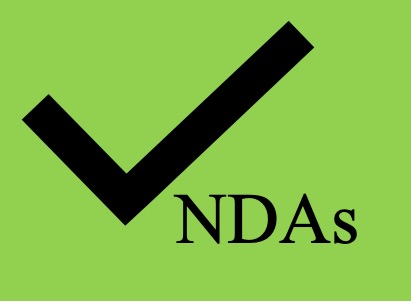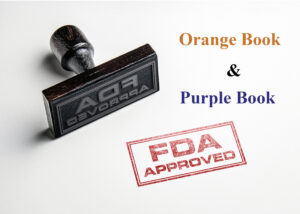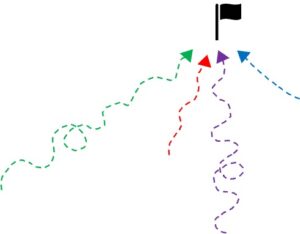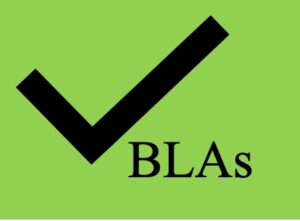- CDER approved approximately 100 NDAs in 2023
- at least 88 of approved NDAs were for small molecules
- 7 approved NDAs were for peptides
- 4 approved NDAs were for oligonucleotides
Before a therapeutic or drug can be marketed or commercialized in the U.S., the therapeutic must first be approved by the Food and Drug Administration (FDA) under either a new drug application (NDA) or biologic license agreement (BLA). As discussed in our blog post Approval and Regulation of Therapeutics and Modalities at the FDA, NDAs and some BLAs are approved by the Center for Drug Evaluation and Research (CDER) at the FDA. The Center for Biologics and Evaluation and Research (CBER) also approves BLAs. So CDER and CBER both approve BLAs. But, CDER approves nearly all of NDAs at the FDA.
CDER approved approximately 100 NDAs and 21 BLAs in 2023. Note that CDER also approves abbreviated new drug applications or ANDAs, and our blog post Therapeutic FDA approvals: the rise of the ANDA discusses the need for an abbreviated new drug application for some therapeutics. Thus, the 100 NDA approvals in 2023 are separate from the ANDA approvals in 2023.
A common misconception is that NDAs are all small molecules. Other modalities are also approved under NDAs such as peptides and oligonucleotides. Of the approximately 100 NDAs approved in 2023 by CDER, at least 88 were small molecules, 7 were peptides, and 4 were oligonucleotides.
Small molecules
Small molecules are manufactured by chemical synthesis and are usually under 1 kilodalton. Small molecules have simple, well-defined compositions, and they are made by chemical synthesis. Understanding the difference between small molecules and larger, protein-based therapeutics like antibodies and fusion proteins is fundamental in the life sciences or biotech industry. Science for Bankers offers an executive course for mastering these concepts and more.
There is variety among small molecules that are approved under an NDA. They can vary in their use and in their mechanisms of actions. For example, Jaypirca (generic name pirtobrutinib) was approved in 2023 and is a typical small molecule drug. It is a kinase inhibitor approved for chronic lymphocytic leukemia/small lymphatic lymphoma. It is formulated into tablets and administered to patients orally. In contrast, Posluma (generic name flotufolastat F-18 gallium) is a small molecule approved under an NDA, but it is not a therapeutic drug. It is a radioactive diagnostic agent. The small molecule is administered intravenously and includes a chelating complex to hold gallium. This small molecule binds to prostrate-specific membrane antigen (PSMA) which is expressed on cells, including prostate cancer cells. Once administered to a patient, positron emission tomography (PET) is used to image PSMA lesions in men with prostate cancer.
Another example is Airsupra, which is a drug product that is actually a combination of two small molecule drugs: albuterol sulfate and budesonide. Albuterol sulfate is a short-acting beta-adrenergic agonist and budesonide is a corticosteroid. This combination drug product is administered via inhalation and is used as-needed to treat or prevent bronchoconstriction or asthma.
Each of these examples is a small molecule that is administered to patients. However, one is a therapeutic drug, one is a diagnostic agent and one is a combination of previously approved drugs. Thus, approved small molecules can vary in their use and compositions.
Peptides
CDER also approves peptides under NDAs and in 2023 seven peptides were approved. Examples include Rezzayo (generic name rezafungin acetate) which is a cyclic peptide that is approved as an antifungal, Aphexda (generic name motixafortide acetate) which is a cyclic peptide that is approved as a hematopoietic stem cell mobilizer, Zepbound (generic name tirzepatide) which is a peptide approved for the treatment of chronic weight management, and Zibrysq (generic name zilucoplan sodium) which is a macrocyclic peptide approved for the treatment of generalized myasthenia gravis (gMG).
Although peptides are composed of amino acids, like antibodies, they are approved under an NDA and not a BLA.
Oligonucleotides
Oligonucleotides are also approved under an NDA and in 2023 CDER approved 4 oligonucleotide based therapeutics. Oligonucleotide therapeutics vary vastly based on their compositions and mechanisms of action. For example, Qalsody (generic name Tofersen) and Wainau (generic name eplontersen sodium) are both antisense oligonucleotides, or ASOs. Rivfloza (generic name nedosiran sodium) is also an oligonucleotide approved in 2023, but Rivfloza is a small interfering RNA (siRNA) which has a different mechanism of action from an ASO. Izervay (generic name avacincaptad pegol sodium) was also approved in 2023 and although it is an oligonucleotide, it has a different mechanism of action from ASOs and siRNAs.
Thus, the different types of oligonucleotides (ASOs, siRNAs, and aptamers) have different mechanisms of actions and compositions. Understanding the differences between small molecules, peptides, and oligonucleotides is fundamental when working in the life science, biotech, or pharmaceutical industries.
Science for Bankers’ Executive Course: Therapeutics and Modalities is a course that covers the different modalities (small molecules, large molecules, protein-based therapeutics, oligonucleotides, etc.) and how they are leveraged in therapeutic strategies. The course is designed for professionals with little to no science background, and is offered asynchronously. Watch whenever, wherever. Learn the “science” of life sciences.




